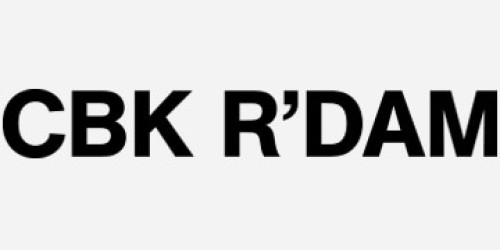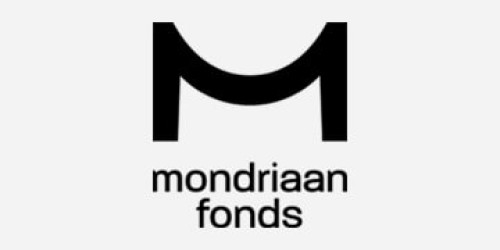 8 Dec 2024-14 Mar 2025
8 Dec 2024-14 Mar 2025
Tele Grey Flamingo Pink
In recent years, Murals Inc. has focused within its exhibition policy on artists who (also) work on the street. As a result, the interaction between the established and the street circuit received a new impetus with all the interesting consequences this entails. For the next exhibition Tele Grey Flamingo Pink, Murals Inc. finds it important to make a trip back to its roots. Indeed, we are showing two artists who have never done a mural before but who, given their working methods, will add an adventurous layer and who knows, new direction to their existing oeuvre.
Carla Klein, Nanna van Heest, and Marleen van Wijngaarden each explore perception, structure, and transformation in their work, revealing hidden layers and questioning conventional interpretations. Carla Klein uses photography as a starting point, blurring the lines between digital and analog to push familiar landscapes toward abstraction, creating images that challenge our sense of place and time. Nanna van Heest focuses on the subjective impact of color, investigating how personal memories and associations can enrich and expand established color theories, transforming color into a language of personal and collective storytelling. Marleen van Wijngaarden builds on the concept of the plastic number, using its structured yet flexible proportions to create unexpected patterns that merge architectural precision with the organic flow of visual art.
Their works invite viewers to explore the layered, often hidden relationships between color, form, and structure within an image. By using photography, color experience, and mathematical proportions in unexpected ways, they prompt viewers to reflect on how images are constructed and which meaningful details often escape our notice. In doing so, they offer fresh perspectives for experiencing and questioning the world, where the ordinary can transform into something extraordinary and profound.



Nanna van Heest
Nanna van Heest is a versatile artist and researcher specializing in color. She views the world as a vast universe of color and constantly explores how colors influence each other and tell new stories. Her curiosity about color is the driving force behind all her work, where she places personal associations, memories, and narratives at the forefront.
How do we perceive color? What associations do we have with colors, and how do they influence our perception of information? Can we tell a story and spark imagination through color alone? Can colors be as powerful as images or words?
Nanna’s ongoing research Colourstories focuses on the value of subjective color perception. Through dialogue, observation exercises, and hands-on visual experiments, she explores ways to develop color concepts alongside existing color theories. Her approach questions objective color theories and creates space for more personal interpretations of color. The optical interaction and personal associations with colors lie at the heart of her work.
Nanna’s research distinguishes between simply looking at color and consciously seeing color. Her vision embraces a holistic approach, where she believes that the study of color should be a collective process encompassing multiple disciplines and perspectives. In addition to her autonomous work and artistic research, Nanna designs interactive workshops that encourage participants to discover and strengthen their own relationship with color. She challenges them to see, re-experience, and apply color to their own creations.
Nanna van Heest has a Master's degree in Design Research (PietZwart Institute) completed the bachelor Graphic Design (Gerrit Rietveld Academie) and Fine Art and Design Education (Willem de Kooning Academy), which contributed to her broad perspective on design and art. Her professional practice is deeply rooted in interdisciplinary research, experimentation, and education. Her studio serves as a space where she tests and explores new concepts, allowing her to bring theory into practice, resulting in visual works that both explore and challenge.



Carla Klein
Carla Klein (1970) lives and works in Rotterdam, the Netherlands. She studied at the Royal Academy of Art in The Hague and completed a residency at the Rijksakademie in Amsterdam (1994–1995). For three decades, Klein has explored the relationship between digital and analog photography and painting, as well as the layered nature of creating and interpreting images. Using her own photography as a starting point, Klein pushes the original image toward abstraction in a way that reveals different paths to representation. Enlarged from negative to snapshot, and from snapshot to canvas, her sublime landscapes become objects, distanced enough from their initial subject to generate new meanings.
Carla Klein paints the world as it presents itself to her. Her work is not painted from, but as a photograph or print: she translates not only the image to the canvas but also the materiality of the photo or print itself. In this way, Klein’s paintings emerge not just as reproductions but as interpretations of the reality presented by these prints, exposing the influence of contemporary visual culture on our perception of the world. She often paints in series, emphasizing the repetitive nature of photographing and approaching an image, creating a separate world isolated from the one from which it originated.
“I often paint desolate (urban) environments. Worlds within worlds, where you cannot stay for long and which always have a closed-off character; swimming pools, airports, subway stations, empty and wild landscapes, and botanical greenhouses. These are enclosed areas, strange and empty. It seems as though there is immense space and freedom, but that can only be observed from a distance or experienced pleasantly for a short time, after which it becomes oppressive or even unbearable. In a sense, you don’t belong to the image you are looking at. I love the contrasts hidden in images like these.
While my earlier work was mostly based on photographs, during and shortly after the COVID-19 period, I based my paintings on cheap and easily reproducible prints. The glossy surface and lack of depth made the images on the prints appear tinny and flat. Similar to the effects of the pandemic restrictions, the prints showed a world that was closed off and unreachable. Through this series, I began to focus more on the interaction between analog and digital photography. The negative holders I use to digitally scan my negatives have become an element I enjoy incorporating. They reveal the process and formation of an image and bring a layered quality and motion in depth to the final composition of the painting, where I want this element to interact with the painted image of the photograph, the paint, and the space.”
“All of these visual processes, whether they occur consciously or unconsciously (inside or outside our body), are presented in a more intensified, attractive, and ultimately more understandable way. This has traditionally been one of the functions of visual art, and it applies especially to Carla Klein’s work, where painting, photography, and the ‘ordinary’ or ‘human’ gaze constantly interact with each other, as well as with the real, material matter from which a two-dimensional image is made. Facets, dimensions, and layers of seeing, photographing, and painting merge like in a chemical process, to the point where the identity of the original elements partially disappears, creating new, unexpected connections.”
“Photographs freeze a moment in time, placing it instantly in the past. The idea that duration could exist—that what is seen continues—might be possible, but it is certain that the photographic image itself is already ‘over,’ simply because it was taken earlier. With paintings, as argued by Rodin and Merleau-Ponty, it is different: what is painted can suggest movement, but also a form of actuality or even eternity. The ‘defects’ in Carla Klein’s paintings, derived from photography, similarly make a process and thus the passage of time visible. However, they also thematize seeing—more than a photo can, these paintings stretch the moment of perception by making visible the layers and moments that separate us from reality.”
— Christophe van Gerrewey, The Chemistry of Seeing, Ivory Black, Deep Orange Yellow




Marleen van Wijngaarden
Marleen van Wijngaarden bases her work on the proportional system developed by Dom Hans van der Laan, rooted in the concept of the plastic number. The plastic number is a unique proportional constant, similar to the golden ratio, that creates harmonious relationships between dimensions. Although often associated with the strict, minimalist structures favored by many architects, van Wijngaarden explores its potential to create unexpected, intricate patterns.
By freely applying these proportions, she reveals surprising connections within the mathematical structure, moving beyond the regularity typically associated with numerical systems. In her work, the plastic number becomes a tool for visual exploration, resulting in patterns that feel both organic and precise. In this way, she uses the plastic number not as a rigid framework but as a flexible foundation for visual expression.

Hit Master Fish
Hit Master Fish is a legendary Hip Hop/Popping dancer, teacher, and choreographer. He began dancing at the age of two, to the sounds of Funk and Hip Hop. At 12 years old he moved from Los Angeles to New York where he was signed up by a famous talent manager named Joe Torres, and he became a member of the dance crew called ‘Dance System 10’. Hit Master Fish and his crew started performing at big venues such as the Opening for Michael Jackson’s Concert at Madison Square Garden, Performances at Copa Cabana, Fun House, Roxy and different locations around the United States.
For most of his life Hit Master Fish has hit the streets, stages, schools, nightclubs and festivals showcasing his Popping styles and skills. His prowess took him to the top of the Popping scene in the World. He was requested to perform for famous artists, such as: Nancy Reagan, Afrika Bambaataa, Cold Crush Crew, Kool Herk, Wutang Clan, Cherelle, Bad Boy Entertainment and more.
Hit Master Fish’s determination, influence, and unique style has granted him the opportunity to travel the world and give Hip Hop & Popping performances & dance Workshops in America, Canada, France, Aruba, and Europe. He continues to set up performances around the globe, and feature in Bollywood and American movies and Documentaries.
Next to his great qualities as a performer and an entertainer, Hit Master Fish is an excellent teacher of Popping and Old School Hip Hop and Funk/Soul dances with lot of experience and extensive knowledge of history of these art forms.





Disclaimer
In the context of the Governance Code, we would like to note that Nanna van Heest and Carla Klein received an artist honorarium from the CBK Rotterdam and the Mondriaan Fund. This does not apply to Marleen van Wijngaarden who as account holder and director board member of Murals Inc. is not eligible for this. This exhibition is further supported by private funds.


